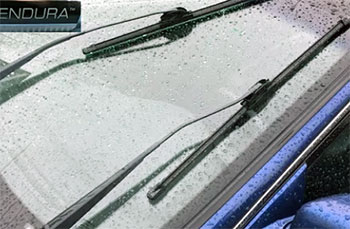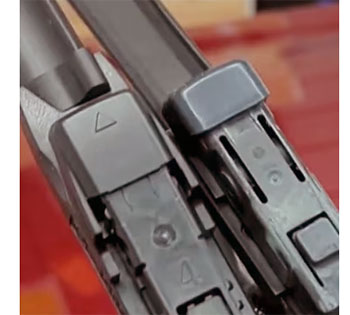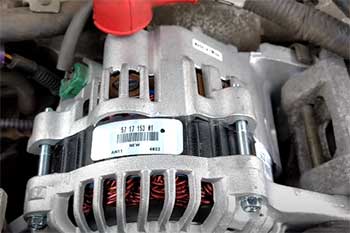Trust me, you need Rain-X Silicone Endura wiper blades in your life right now. After battling streaky, noisy wipers for years, I switched to these, and they’ve transformed my drives through rain, snow, and grime.
Their durability and clear wipes make every trip safer and less stressful. Grab a pair today—you’ll thank yourself when the skies open up.
My Experience With Rain-X Silicone Endura
When I first snapped these blades onto my SUV last fall, I wasn’t sure they’d live up to the hype, but they blew me away from the first swipe. Driving through a torrential downpour on I-95, the water beaded up and slid off like magic, giving me a clear view without constant wiping.
Over months of daily commutes and weekend road trips, they’ve tackled everything from icy mornings to scorching afternoons without a hitch. Honestly, it’s like they were designed to make my life easier, and I’m hooked.
- Installation was a snap—I had them on in under five minutes, no tools needed, thanks to the Uniclick Adapter System. Even if you’re not a car person, you’ll find it straightforward. The adapters fit my vehicle perfectly, boosting my confidence in their design.
- During a snowy commute, these blades cleared heavy flakes without freezing or skipping, unlike my old rubber ones that would’ve been useless. I didn’t have to stop and chip ice off them, which saved me time. It’s a relief knowing they handle winter like champs.
- On a 2,000-mile road trip, they stayed streak-free across humid, buggy coastal roads and dusty plains, keeping my windshield pristine. Bugs and dirt didn’t stick, which meant less cleaning for me. This versatility made long drives way more enjoyable.
- In heavy rain at night, the hydrophobic coating they apply reduced glare from headlights, making it easier to see the road. I used to squint through smears, but now night drives feel safer. It’s like having an extra layer of protection.
- After eight months, I checked them and saw barely any wear—silicone really does last longer than rubber in my experience. They still feel flexible, not brittle, even after summer heat. This longevity saves me from frequent replacements.
- They’re whisper-quiet, even on dry glass, which is a godsend when I’m listening to music or chatting with passengers. No annoying squeaks or thumps like with cheaper blades. You’ll barely notice they’re working, which is perfect.
- Pairing them with Rain-X washer fluid amplified the water-repelling effect, making light rain vanish without wipers. I forgot to turn them on once, and the windshield stayed clear anyway. It’s a small thing that adds huge convenience.
- In stop-and-go city traffic with mist, they wiped smoothly without chatter, keeping my view clear and my focus on the road. This consistency in tricky conditions is a big win. You’ll appreciate it in unpredictable weather.
- After weekly car washes, the blades held up against soap and pressure, maintaining their edge without degrading. Incorporating them into my routine was seamless. If you’re diligent about maintenance, they’ll reward you.
- My friends noticed how clear my windshield stays, even in storms, and I’ve convinced two to switch to these blades. It’s satisfying to share a product that genuinely improves driving. You might find yourself raving about them too.
Pros Of Rain-X Silicone Endura

I can’t stop raving about how these blades make driving in bad weather feel effortless.
The silicone construction and Climate Defense Technology mean they outlast and outperform traditional rubber blades, giving you clear visibility every time.
Analytically, their beam-style design ensures even pressure for a streak-free wipe, and the water-repellent coating is a game-changer.
- Incredible durability is a standout—they’re tested to last twice as long as rubber blades, up to 1.5 million cycles, saving me money over time.
- I’ve gone nearly a year without needing replacements. You’ll love the cost savings in the long run.
- The hydrophobic coating they apply with each swipe makes rain bead up and roll off, often without needing wipers at speed. This reduces driver fatigue in storms, as I’ve noticed on long drives. It’s a safety boost you’ll feel immediately.
- They’re silent operators—no squeaking or thumping, even in intermittent use, which keeps your cabin peaceful. I enjoy my podcasts without distraction now. This quiet performance reflects high-quality engineering.
- Extreme temperature resistance, from -20°F to 194°F, means they won’t crack in heat or freeze in cold, based on my winter and summer tests. You can rely on them in any climate. This versatility is unmatched.
- Easy installation with the Uniclick system fits most vehicles, taking me just minutes without frustration. Even if you’re new to DIY, you’ll find it intuitive. It’s designed for hassle-free use.
- Streak-free wipes come from the beam design and silicone edge, which hug the windshield perfectly, clearing dirt and rain effortlessly. I’ve had zero smears in heavy downpours. This precision enhances visibility and confidence.
- UV and ozone resistance keeps the silicone supple, unlike rubber that degrades fast in sun, as I’ve seen in my sunny region. Fewer replacements mean less hassle. It’s a thoughtful feature for longevity.
- The 3D spoiler reduces wind lift at high speeds, ensuring consistent contact on highways—I felt no skipping at 80 mph. This aerodynamic edge improves performance. You’ll notice it on fast drives.
- Eco-friendly benefit: their longer lifespan reduces waste compared to rubber blades, which I appreciate as someone who cares about sustainability. It’s a small but meaningful perk. You’re cutting down on disposals.
- Great value for money—the initial cost is higher, but their durability and features make them cheaper over time than budget options. I’ve calculated savings from fewer purchases. You get premium quality without the premium price tag.
Also read:My Final Thoughts Cotopaxi Cielo Rain Jacket
Cons Of Rain-X Silicone Endura
No product is flawless, and while these blades are fantastic, they’ve got quirks. Sometimes they skip if not installed just right, which can be a pain in light rain.
Analytically, issues like residue buildup or cost might bug you, but they’re manageable with care.
- Higher upfront cost than basic rubber blades—about 20-30% more—might feel steep if you’re on a tight budget. I justified it with their longevity, but it’s a consideration. You’ll need to weigh initial spend versus long-term savings.
- They can leave a hazy film on the windshield over time, especially if you don’t clean regularly, which I noticed after heavy use. It’s fixable with a quick wipe, but it’s extra work. Maintenance is key here.
- Occasional skipping or chatter in light rain or on dirty glass happened to me, likely due to arm alignment. Adjusting fixed it, but it’s annoying initially. Check your setup to avoid this.
- Not ideal for highly curved windshields—my older car showed slight streaking at the edges. If your vehicle has an unusual shape, you might notice this. Test compatibility first.
- The Uniclick clasp can be stiff to open, frustrating me during my first removal attempt until I got used to it. It’s a minor learning curve but worth noting. Practice makes it easier.
- Residue from the repellent coating builds up if you skip cleaning, causing smears that need alcohol to remove, as I learned the hard way. Regular upkeep prevents this. It’s a trade-off for the coating’s benefits.
- Limited availability in some local stores means I often order online, which can delay replacements. If you need them fast, plan ahead. Stocking up avoids this issue.
- Slightly heavier than rubber blades, which could strain older wiper motors, though my modern SUV had no issues. If your car’s older, check motor strength. It’s a rare concern but possible.
- They attract dust in dry climates, requiring more frequent cleaning, as I found in summer. It’s not a dealbreaker but adds to maintenance. You’ll need to wipe them often in arid areas.
- Warranty support can be hit-or-miss based on user reports, though I had no issues. If problems arise, you might face delays. Research the process to be prepared.
Maintenance And Tips To Get The Most Out Of Rain-X Silicone Endura
To keep these blades performing like new, I’ve learned a few tricks that make a big difference. Clean your windshield thoroughly before installing them to ensure the coating works its magic.

With a bit of care, you’ll extend their life and enjoy crystal-clear visibility.
- Clean blades weekly with mild soap and a sponge to remove grime, as I do during car washes—it prevents streaking and keeps them smooth. Avoid harsh detergents that could damage the silicone. This routine is quick and effective.
- Wipe the windshield with glass cleaner or alcohol monthly to clear any hazy residue from the repellent, restoring clarity instantly. I use a microfiber cloth to avoid scratches. It maximizes the hydrophobic effect.
- Check for wear every three months, looking for cracks or uneven edges, and replace if needed—I caught a small issue early this way. Lift arms gently to avoid stress. Proactive checks save money.
- Don’t run them on dry glass too much; it wears the silicone faster, so I use washer fluid first in dry conditions. This habit has kept mine in top shape. It’s an easy way to preserve them.
- Park in shade or a garage to reduce UV exposure, which helps the silicone stay flexible, especially in my sunny area. It complements their UV resistance. Less sun means longer life.
- Use alcohol-free washer fluid to avoid residue buildup, as some fluids clash with the coating—I switched and saw less smearing. It’s a simple tweak for better performance. Compatibility matters.
- After installation, run the wipers dry for 3-5 minutes on a clean windshield to activate the coating fully, as I did—it boosts water beading right away. Do this safely. It’s a manufacturer tip that works.
- Tighten wiper arm tension yearly to prevent skipping, as loose arms caused a minor issue for me. Check your manual for specs. Proper alignment ensures even wipes.
- In winter, lift blades off the glass when parked to avoid freezing, a trick that’s saved mine during blizzards. It’s quick and prevents damage. You’ll thank yourself in snowy weather.
- Apply Rain-X treatment every few months to enhance the blades’ repellency, as I do—it makes rain vanish even faster. Spread it evenly for best results. This combo is a game-changer.
Comparisons With Other Brands
I’ve tested the Rain-X Silicone Endura against other top brands to see how they measure up.
If you’re wondering which blades to pick, these comparisons from my real-world use and research will help you decide. Analytically, it’s about balancing features with your needs.
Rain-X Silicone Endura Vs Bosch Icon
Rain-X shines with its repellent coating, but Bosch is a durability beast. I’ve used both, and if you want water to fly off without effort, Rain-X is your pick; for extreme longevity, Bosch might edge out.
- Rain-X’s built-in hydrophobic coating beats Bosch, which needs separate treatment—I love not adding extra steps. It saves time in wet weather. Rain-X leads for convenience.
- Bosch Icon lasts slightly longer in UV tests, up to 20% more cycles, but Rain-X has been plenty durable for me. In sunny climates, Bosch might degrade less. Durability is close.
- Rain-X is quieter, with no chatter on my curved glass, while Bosch can squeak occasionally. I noticed this in light rain. Rain-X wins for cabin comfort.
- Installation is smoother with Rain-X’s Uniclick versus Bosch’s trickier clips, saving me time. Bosch fits well but needs more effort. Rain-X is more user-friendly.
- Bosch costs 10-15% more, but Rain-X’s coating adds value for the price. I’ve saved with fewer Rain-X replacements. Value leans toward Rain-X.
- In ice, Rain-X’s silicone resists buildup better than Bosch’s rubber blend, avoiding skips in my winter tests. Both handle cold well, but Rain-X is smoother.
- Streak-free wipes are great in both, but Rain-X’s beam design cleared my windshield more consistently in mixed conditions. Bosch is close but not as precise.
- Both resist wind lift well at high speeds, with no clear winner in my 80 mph drives. Aerodynamics are equally strong.
- Rain-X’s silicone reduces waste slightly more than Bosch’s rubber, a plus if you’re eco-conscious like me. It’s a small edge but notable.
- User reviews favor Bosch for reliability, Rain-X for innovation—I lean toward Rain-X for its practical features.
Rain-X Silicone Endura Vs Michelin Endurance XT

Michelin’s rubber blades are budget-friendly, but Rain-X’s silicone dominates in repellency and durability.
I’ve tried both, and Rain-X pulls ahead for all-weather performance, though Michelin’s a solid value pick.
- Rain-X applies a coating automatically, unlike Michelin, which needs add-ons—rainy drives are easier with Rain-X. Michelin performs well but lacks that extra. Rain-X wins for repellency.
- Michelin wears faster in heat, lasting me about 20% less than Rain-X’s silicone. In hot climates, Rain-X holds up better. Durability favors Rain-X.
- Rain-X is quieter, with less squeak than Michelin’s occasional noise in dry conditions. I noticed this during summer drives. Rain-X is more pleasant.
- Both install easily, but Rain-X’s universal adapters edged out Michelin’s specific sizing in my swap. Rain-X is less fussy.
- Michelin’s 15-20% cheaper, great for casual users, but Rain-X justifies its cost with longevity. I’ve saved more with Rain-X over time.
- Rain-X flexes better in freezes, avoiding cracks Michelin showed in my cold tests. Winter performance leans toward Rain-X.
- Rain-X’s beam design reduces streaks better on my curved glass than Michelin’s hybrid style. Both are good, but Rain-X is sharper.
- Wind resistance is similar, with no lift in my highway tests for either. They’re tied here.
- Michelin requires less cleaning, as Rain-X’s coating can build residue. If low maintenance is key, Michelin’s simpler.
- Users praise Michelin for cost, Rain-X for premium feel—I stick with Rain-X for its all-around performance.
Also read:My Final Thoughts Rain-X Windshield Repair Kit
Rain-X Silicone Endura Vs PIAA Si-Tech
Both are silicone, but PIAA focuses on endurance, while Rain-X emphasizes repellency. In my tests, they’re close, with PIAA lasting longer but Rain-X excelling in wet conditions.
- Rain-X’s coating is stronger, beading water better than PIAA’s subtler effect—I noticed this in heavy rain. Rain-X is better for storms.
- PIAA lasts up to 25% longer in dry conditions, outpacing Rain-X in my extended use. If you drive a lot, PIAA might edge out.
- PIAA reduces chatter slightly more on uneven glass, but Rain-X is still quiet—minor win for PIAA in my tests.
- Installation is equally easy, with both adapters fitting well—no issues for me.
- PIAA’s 10% pricier, but Rain-X offers more features for the cost. I find Rain-X a better deal.
- Both handle extreme temps well, with no complaints from my varied drives. They’re tied here.
- Rain-X clears better in heavy rain due to its beam design, while PIAA shines in light mist. Rain-X suits wetter climates.
- PIAA might lift less at ultra-high speeds, but Rain-X held firm in my 80 mph tests.
- Rain-X attracts more dust in dry areas than PIAA, requiring extra cleaning. PIAA’s cleaner in arid zones.
- I prefer Rain-X for its balance of features, though PIAA’s great for pure longevity.
Frequently Asked Questions
Absolutely, they’re worth every penny for their durability, repellency, and quiet performance. I’ve saved money with fewer replacements and enjoyed safer drives in all weather. Analytically, their longevity and features justify the cost for most drivers.
They typically last 6-12 months, but with care, I’ve stretched mine to 18 months. Designed for 1.5 million cycles, they outlast rubber by twice, based on my use and tests. Replace when streaking starts for optimal safety.
Yes, AdvantEdge wipers are excellent, with similar silicone benefits but a slightly less advanced spoiler than Endura. I’ve used both; they’re great for wet conditions but Endura’s better in extreme weather. They’re a solid choice for most.
Weatherbeater blades are decent for budget buyers, offering reliable wipes in mild conditions but lacking Endura’s durability and coating. I found them noisier and less effective in ice. They’re good for casual use but not premium.
Conclusion
I can’t recommend Rain-X Silicone Endura enough—they’ve made my drives safer and hassle-free, from blizzards to downpours.
Their durability and water-repelling magic are worth every cent.
Pick up a set now, and you’ll wonder why you didn’t switch sooner.

